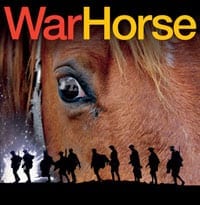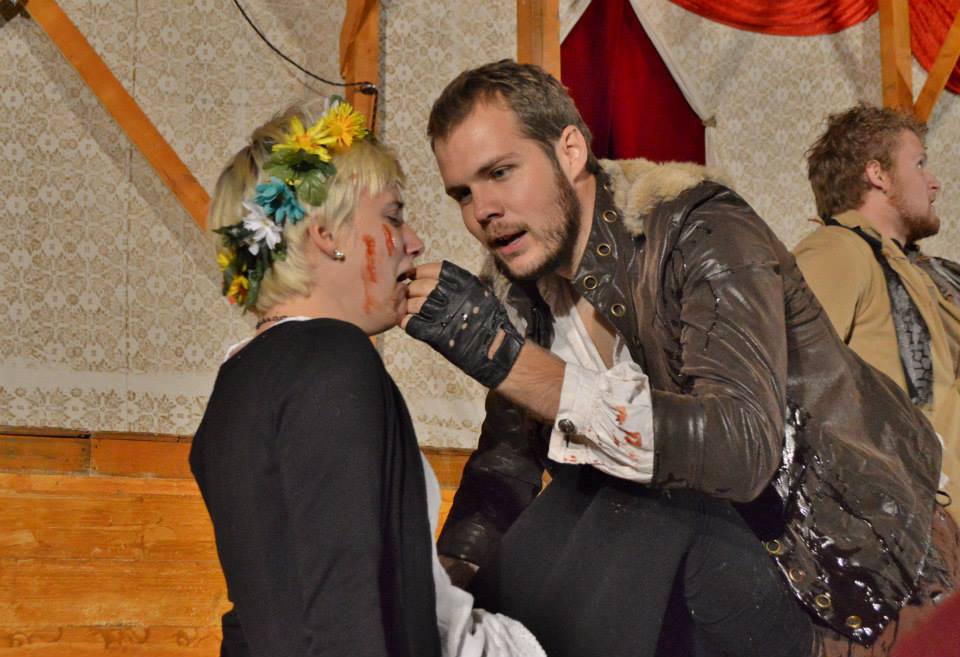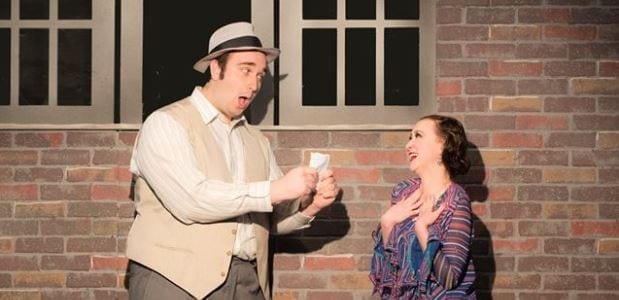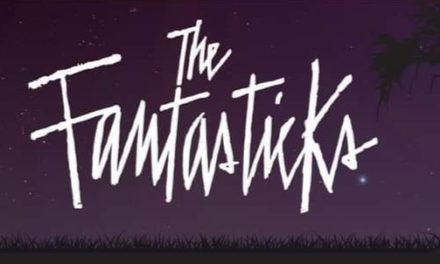SALT LAKE CITY — Early in the play War Horse, Albert is faced with a near impossible task. He must get his riding horse to plow a field. I feel beset with a small part of that type of concern. I’m supposed to write a critical review of Broadway Across America’s touring production of War Horse. The problem I face is I have little to criticize about this singular production. A life of watching theatre and studying it in college only left me describing the production as a fantastic merging of a multitude of theatrical tenets to create an experience that will surely remain with me for years to come.
War Horse was adapted by Nick Stafford for the National Theatre in London, and then transferred to the West End and Broadway. On Broadway it won 5 Tony Awards in 2011, including Best Play and several technical awards, such as lighting and sound that American audiences still get to enjoy in this touring production 3 years later. Most notably a special Tony Award was given to the Handspring Puppet Company for the puppetry in the play. Now, don’t think of this as some Muppets or Avenue Q-type puppets, but rather more like the puppetry used in Broadway’s The Lion King. It may be argued that the main character in the play is Albert’s horse, Joey.
Unlike the book by Michael Morpurgo that inspired the play, there is no narrative voice for Joey. Yet as a silent character, the three puppeteers that control Joey—either as a foal or a full-grown horse—give as much personality to Joey as any human actor could give to a human character. The first view of the immature Joey is mixed, as the puppeteers are so apparent. Yet, the puppeteers manage to create so much character with his winnowing and a few flicks of the ears and head. Then as Albert trains and raises Joey and a full grown Joey is revealed rising on his hind legs, my heart and imagination gave a start. There were still three puppeteers, but two are mostly hidden in the body of the horse and one is externally controlling the head by using a pole. Yet amazingly, not long into the first act I could almost completely forget that humans are actually controlling the horses. The most telling moment of the effectiveness of the illusion was when Friedrich Muller is confronted by a fellow soldier who asks why he has been empathetic to the horses and not his fellow soldiers. He exclaims, “They are just beasts. They do not feel or think as we do.” However, the character and lifelike action created by these master puppets left me feeling otherwise.
 Original directors Marianne Elliott and Tom Morris and tour director Bijan Sheibani unify numerous theatrical elements. It is not a musical, yet John Tam’s rousing and beautiful songs are an essential part of the production. A touch of Celtic style roused the Irish blood in my veins, but overall I think it was simply the heartfelt emotion and beautifully executed sound of John Milosich and Spiff Wiegand that solidified the power of the music. The airy, but powerful songs of farmers, and soldiers, and marching tunes left each scene with them suspended in time and memory. Long will I dwell on the rousing intro and finale of being “only remembered for what we have done.” The songs also drew me back to a time when songs truly brought communities together. I especially loved the song “Wheel of Fortune” when Joey valiantly plows the field to win the bet Albert’s stubborn father has gotten them into and the whole town begins to sing in encouragement and awe pushing him forward “as we come rolling home.”
Original directors Marianne Elliott and Tom Morris and tour director Bijan Sheibani unify numerous theatrical elements. It is not a musical, yet John Tam’s rousing and beautiful songs are an essential part of the production. A touch of Celtic style roused the Irish blood in my veins, but overall I think it was simply the heartfelt emotion and beautifully executed sound of John Milosich and Spiff Wiegand that solidified the power of the music. The airy, but powerful songs of farmers, and soldiers, and marching tunes left each scene with them suspended in time and memory. Long will I dwell on the rousing intro and finale of being “only remembered for what we have done.” The songs also drew me back to a time when songs truly brought communities together. I especially loved the song “Wheel of Fortune” when Joey valiantly plows the field to win the bet Albert’s stubborn father has gotten them into and the whole town begins to sing in encouragement and awe pushing him forward “as we come rolling home.”
 Moment after moment becomes a beautiful choreographed dance (from choreographers Toby Sedgwick and Adrienne Kapstein) as the puppets effectively plow fields, lead cavalry charges, and learn to wear harnesses. Even the scene changes become a wonderful piece of choreography as sets were often created by a pieces of wood held by the ensemble to create fences, or metal bars to create a ship crossing a tempestuous English Channel. All this was completed in seconds. I was surprised that sometimes this flow was lost later on, but mostly it was when the puppet of a dead horse had to be completely removed from the stage. The disastrous cavalry charges into machine guns had men being blown off of horses and horses tumbling and rising in pain that did a better job than any live action or CGI shot could have captured the death throes of these noble creatures. The strain of pulling carts and heavy artillery is as realistic in the horses as being ridden or the battle of Joey and his companion, Topthorn. There was nothing these horse puppets could not do.
Moment after moment becomes a beautiful choreographed dance (from choreographers Toby Sedgwick and Adrienne Kapstein) as the puppets effectively plow fields, lead cavalry charges, and learn to wear harnesses. Even the scene changes become a wonderful piece of choreography as sets were often created by a pieces of wood held by the ensemble to create fences, or metal bars to create a ship crossing a tempestuous English Channel. All this was completed in seconds. I was surprised that sometimes this flow was lost later on, but mostly it was when the puppet of a dead horse had to be completely removed from the stage. The disastrous cavalry charges into machine guns had men being blown off of horses and horses tumbling and rising in pain that did a better job than any live action or CGI shot could have captured the death throes of these noble creatures. The strain of pulling carts and heavy artillery is as realistic in the horses as being ridden or the battle of Joey and his companion, Topthorn. There was nothing these horse puppets could not do.
Also well orchestrated was the beautiful use of animation and what appears to be hand-sketches on a white scrim that rips above the stage. At first, I believed it to be in the form of a torn bed sheet, but later realized it is meant to match the triangle shaped piece of paper that Albert tore out of the amateur artist book of Lieutenant Nicholls with a drawing of Joey as he ran off to join the army. The piece of paper presented animations from 59 Productions that worked seamlessly with houses on the stage or the battles of men, horse and machine all happening below to create another example of a beautifully unified production.
Upon reflection it is hard to find much to critique about this show. The acting was excellent and had especially wonderful moments. Rose Naracott (played by Maria Elena Ramirez) was truly entertaining and an anchor throughout the show. She could jump from fooling Albert that he had starved the chickens to death to sternly accosting her husband. There were also wonderful cameos by Sergeant Fine (played by Brooks Brantly) who effused such humor out of Albert joining the army to find his “p-p-p-pony,” or the beautifully hopeful and rousing speech of Lieutenant Nicholls (played by Brendan Murray) before his fateful cavalry charge. I would say the only problem I faced were the scenes with the little French girl, Emilie (Ka-Ling Cheung). The generally accepted mode of operating scenes where several languages were on stage was to still have all the characters speak English for the audience and just not understand each other on stage. However, in most scenes with Emilie and Friedrich I found it hard to understand what she was saying, and then lost her involvement and attachment to Joey, thus undermining these scenes from the whole of the production.
War Horse is truly a singular experience. It will long be remembered by anyone who sees it. The play is stirring and rousing. There is humanity of self, community, and determination of humans and horses alike. If there are still tickets left, join up with Albert to experience Joey’s story first hand.






